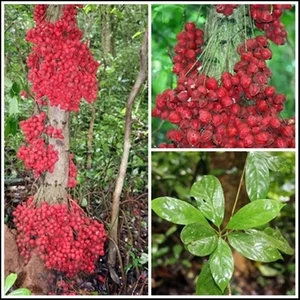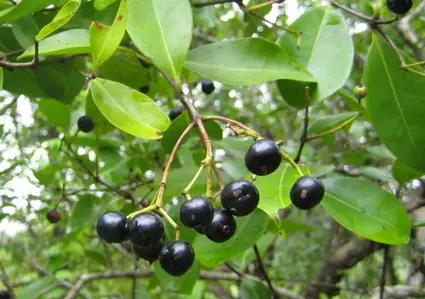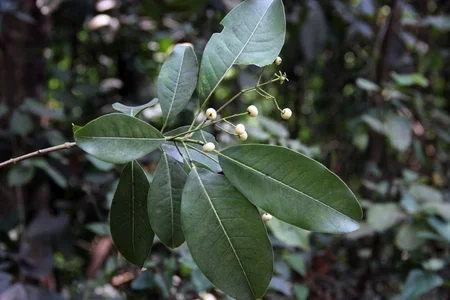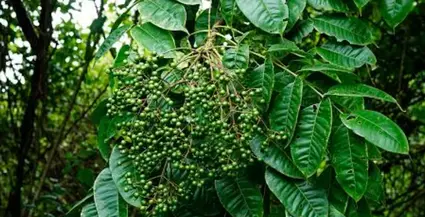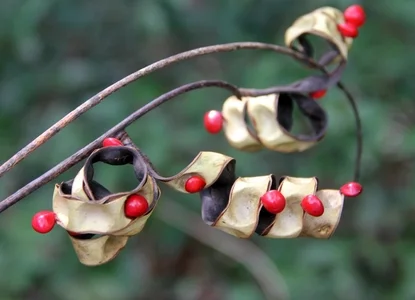Garcinia Indica or Kokum
Garcinia Indica or Kokum
Origin of Kokum
Garcinia Indica or Kokum is indigenous to the Western Ghats of India, and has been a part of the country’s history for centuries. The fruit’s recognition is still limited to the subcontinent of Southeast Asia, although a few kokum butter-based cosmetic products have begun to appear in the global markets.
Other Common Name
1. Scientific Name: Garcinia Indica
2. Other Names: Kokam, Vrikshamia, amlabija, amlashaka (Sanskrit), Kokum (Hindi, Gujarati, Konkani), Bheranda, kokambi (Marathi), Kaatampi (Malayalam), Murgina, punarpuli (Kannada and Tulu), Tintali (Oriya), Goa butter tree, Indian berry, Indian tallow tree, Indian butter tree, Kokum butter tree
3. Names in non-English languages: French India
Description
Garcinia Indica or Kokum is a Mangosteen (Garcinia mangostana) relative originating in humid tropical India, its natural range limited to the Western Ghats and the West coast of the sub-continent, extending from near Matheran, in the hills to the east of Mumbai (Bombay), south through the states of Goa and Karnataka to Kerala. Medium sized evergreen dioecious tree with milky exudate. Branchlets drooping. Leaves reddish when young, obovate-oblong. Flowers greenish-white, male 4-8 in axillary and terminal fascicles, female solitary, terminal. Berry globose, smooth, 2-4 cm diameter, green turning red on ripening,4-8 loculed and seeded.
It is a slow-growing tree, to heights of up to 20 m (66 ft). However, it is more typically 10 to 15 m (33 to 50 ft) tall with a slim, low-branching trunk supporting a densely leafy pyramidal crown. The bark is dark grey or dark brown, scaly, rough and sometimes mottled by lichens, mosses and algae, which thrive in the humid conditions in which the tree grows.
Leaves are lance-shaped or elongated-oval, 5 to 10 cm (2 to 4 in) long, crimson red and soft when they emerge, becoming dark glossy green with a leather texture. Arranged in pairs along stems, they remain on the tree in all seasons.
Flowers are small with fleshy, waxy pink petals and with female and male flowers on separate trees. They are borne directly on the stems, singly or in clusters of up to four and bloom in the dry winter season. They are followed on female trees by small round fruit, 3 to 4 cm (1.2 to 1.6 in) in diameter.
The fruit are green when young, become dark purple-red when ripe and have a thick rind that encloses soft, juicy pulp embedded with six to eight kidney-shaped seed. Kokum is a heavy bearer, each female tree producing hundreds of fruit that ripen around the start of the rainy season.
Uses of Garcinia Indica or Kokum
The seed yield 25 to 35% of an edible, white or pale yellow buttery fat known as ‘Kokum Butter’. It is produced by grinding, steaming and then pressing the seed to release the fat, which is then filtered and churned into a solid buttery mass. The leftover seed cake is high in protein and is used mainly as an ingredient in livestock feed.
Kokum butter has a melting point of around 40°C (104°F), remaining solid at room temperature. Its melting properties and buttery consistency make it suitable for confectionery, including use as a Cocoa Butter Equivalent (CBE) to extend or replace Cocoa butter (from Theobroma cacao) in chocolate manufacturing. It is also widely used in its native range as a substitute for Gee, the clarified dairy butter common in Indian cooking. And it is an ingredient in cosmetics, especially skin moisturising, lip balm and lipstick products.
The fruit rind is juicy with a sour flavour and is made into a syrup (cordial), beverage base, or dried as a souring agent.
The syrup, known as ‘Kokum syrup’ is made by mixing the rind with cane sugar and packing the mixture into sealed drums left to stand. After standing for a week, the mixture is pressed and strained to produce the syrupy liquid, which is usually bottled. It is an intensely deep purple-red syrup with a pleasing fruity taste and is served diluted with tap or soda water to make a refreshing drink.
Kokum rind is indispensable in making ‘Sol Kadi’, one of southern India’s most popular beverages. A vividly pink drink, it is made by soaking the rind in hot water to extract the colour and flavour, then mixing the resulting liquid with fresh coconut milk, salt, garlic and green chillies.
Some of the rind is also usually reserved for drying (after brining) to make a souring agent known as ‘Malabar tamarind’, commonly used in southern Indian cooking, especially fish curries.
Wild trees are now threatened by the loss of natural habitat, which has caused the species to be listed as vulnerable by the International Union for Conservation of Nature and Natural Resources (IUCN).

Climate for Kokum
Kokum grows naturally in humid subtropical and tropical lowland to mid-elevation climates, generally frost-free areas with annual lows of 18 to 25°C annual highs of 27 to 35°C, annual rainfall of 2000 to 5000 mm and a dry season of 7 months or less.
Growing Garcinia Indica or Kokum
New plants are usually started from seed and cuttings, with cuttings from known female and male trees considered best practice to establish a good male to female ratio for successful pollination and fruit production. The seed are very slow to germinate, and seedling trees only start to flower and bear fruit at about seven to eight years old. Yields vary considerably but average around 12 kgs (26 lbs) of fruit per tree per year.
Performs best on free- to slow-draining clay and loam soils of a moderately acid to neutral nature, generally with a pH of 5.0 to 7.5, and on sites with full to partial sun exposure. It has good tolerance to permanently wet or waterlogged soils.
Problem features
There does not appear to be any records of escape and naturalisation anywhere in the world. The likelihood of it becoming a problem weed is low due to the relatively large size of the fruit and seed, which makes them not easily dispersed.
Availability of Kokum in India
Farmers harvest kokum commercially throughout the western coastal regions of India, from Gujarat to Maharashtra to Kerala. Its ubiquity along the Konkan coast is a reason for the fruit’s predominance in Konkan cuisine. The trees flower from November to February, and the fruit season lasts through March, April and May.
Where to find Kokum in India
When in season, vendors and emporiums in these growing regions sell kokum readily. Locals living in the areas where the fruits grow—such as Goa—often have kokum trees in their yard or within the neighborhood. Fresh fruits do not appear in other regions of India.
It is possible to find kokum derivatives sold year-round throughout the country: dried kokum skins, powder and kokum syrups, are examples. Though they will not be in every store, kokum products appear in shops specializing in a variety of dried fruits and nuts.
How to Open/Cut Garcinia Indica or Kokum
Open kokum by gently pressing on both sides of the fruit with the thumb and index finger. If the fruit is ripe, the pliable skin will come apart and reveal the fruit. If the fruit is under ripe, the thick skin will not yield. Once the fruit’s soft, thick skin is “cracked,” opening the fruit and removing the white fleshy pods inside is effortless.
Some prefer using a teaspoon to make a small indentation in the skin, and then gently pry into the kokum. This indentation makes it easier to apply force with one’s fingertips and open the fruit.
Always wash dried kokum before use, as this will remove dust and other particles that may accumulate on the fruit over time. If using dried kokum, soak it beforehand. This will soften the rind enough to blend it in drinks, curries and sauces.
Checking for Ripeness in Kokum
As kokum ripens on the tree, it turns from green, yellow, to red, and finally, to dark mauve. The thick skin is initially hard and firm, but when ripe, can be gently pried open.
Avoid selecting fruits with noticeable dents, blotched skin and bruises. Bruising causes the bitter latex in the skin to permeate the edible portion of the fruit, thereby rendering the whole fruit inedible. The fruit should be shiny and its shape perfectly round.
Kokum is sweet, but acidic. It has a juicy texture common among other fruits in the mangosteen family: each of the fruit’s five to eight sections has edible, watery yet potent flesh surrounding a malleable flat seed. Kokum shares several traits with cochin goraka, and the fruits may be used interchangeably.
Dried kokum peel tastes exceptionally sour and metallic, with no trace of sweetness. The lack of sugar gives the fruit a salty disposition, not unlike fresh cranberry.
The fruit is seldom consumed raw and is instead used as a flavoring agent in curries or drinks.
Storage
Keep kokum at room temperature and enjoy within a few days of ripeness. In the refrigerator, the fruits will keep up to one week. Do not freeze kokum, as their flavor and texture are adversely affected.
Place dried Kokum in an airtight container to avoid moisture. Refrigeration is not required, as the fruit keeps for years on kitchen countertops.
Nutritional Value of Kokum
Kokum has not undergone a formal nutritional analysis. It is, however, high in vitamin C, low in fat and calories, low sugar and high in fiber.
Health Benefits of Kokum
The properties of the seed fat lend to its use as an ointment base for adding medicinal ingredients, such as liniment ointments for treating sore muscles and strains. It is also used in its pure form to soothe chapped or cracked lips, fingers and feet.
The rind is rich in hydroxycitric acid, a biologically active plant metabolite sometimes touted as an anti-obesity drug, reportedly inhibiting the conversion of carbohydrates to fats. Hydroxycitric acid is also present in high concentrations in the fruit rind of Garcinia cambogia (Garcinia gummi-gutta).
Kokum has many traditional medicinal uses:
1. Anthelmintic
2. Cardiotonic
3. Fights dysentery
4. Reduces tumors
5. Alleviates pain
6. Astringent
7. Its juice aids digestion an wards off heatstroke
8. Its butter treats burns and various wounds
9. Reduces biliousness
According to the book, “Molecular Targets and Therapeutic Uses of Spices,” Ayurvedic practitioners use kokum to treat inflammatory issues, rheumatoid pain and bowel problems, intestinal parasites, delayed menstruation, dermatitis, ear infections and sores.
Like its cousin, garcinia cambogia, kokum’s rind possesses a compound called hydroxycitric acid. This substance has a number of benefits including reducing the appetite, improving heart health and the immune system, lowers fat formation and stabilizes cholesterol levels. Those unable to find elusive garcinia cambogias may wish to seek out its better-known relative, kokum. For more information on HCA, see Garcinia cambogia.
The scientific community has discovered and verified several benefits of kokum:
1. The Indian Journal of Pharmaceutical Sciences published 2011 study indicating that the fruit’s polyphenols have moderately high antibacterial activity.
2. The Journal of Food Biochemistry published a study revealing kokum’s liver protecting properties
3. The Journal of Food and Agriculture Activity published the findings of scientists in Japan showing kokum’s possibility as an antiulcer drug
4. A study published in Food Microbiology article shows that kokum’s extracts have antifungal activities. Its ability to ward off aflatoxins makes it a strong candidate as a natural food preservative.
4. Kokum contains a substance called garcinol. According to the book, “Molecular Targets and Therapeutic Uses of Spices,” garcinol reduces inflammation responsible for certain cancers, diabetes and neurological disorders. Garcinol is also an antiviral, antibacterial, anticarcinogenic, and antiulceration.
Many uses of Garcinia Indica or Kokum
Kokum Recipe Ideas and Uses:
1. Eat kokum raw like the locals of the Western Ghats: Use a toothpick and poke holes into the skin. Roll the fruit in a combination of salt and sugar; then suck the juice from the kokum.
2. Sun dry the kokum skin and use as a gentle souring agent in curries.
3. Pulverize the sundried skin into a powder, and then use it as a sweet and sour food additive
4. Substitute kokum for tomato or tamarind to make a zestier dal or curry.
5. Make kokum Rasam by soaking and boiling the peel in water. Use 1 cup of water for every 2 kokum peels. Add salt and sugar to the mixture once boiled. On the side, briefly heat mustard seeds, chili and cumin in oil. Add these spices to the kokum water concoction. Serve the Rasam with rice or serve as a soup.
6. Make kokum kadi, a famous sour, savory beverage made by combining dried coconut, salt and green chilies with kokum syrup and water.
7. Soak the skin in warm purified water for approximately 40 minutes: soaking will cause the water to turn a rich purple color. Drink this water for a beverage rich in anthocyanins, HCA, and other health-boosting polyphenols.
8. Use this colorful skin-soaked water as a healthy, slightly sour food-coloring agent for use in other fruit drinks and smoothies. Flavor combinations include bananas, grapefruit, and coconut milk. Or, lime juice, watermelon and mint.
9. Make a sweet kokum beverage by removing the juicy pulp from the fruit, squeezing it in cheesecloth, then adding sugar to the juice.
10. Use the fruit’s butter made from the seeds to moisturize skin. Or, use as an emollient ingredient for cosmetic products such as balms, lotions and soaps.
11. Use the butter (often sold in bazaars along the western coast) for cooking.
12. Use kokum juice as a preserving agent in jams and canned goods
Flavor Complements:
Purple mangosteen, cambogia, cochin goraka, elephant apple, mango, tamarind, tangerine, coconut, lime, lemon, kiwi, orange, grapefruit, pomelo, sweet lime, pineapple, butterfruit, bael, wood apple
Herbs, spices, and oil: green chili, coriander, rock salt, black pepper, cumin, turmeric, mustard seed, salt, lemon juice, limejuice, citrus rind, sugar, jaggery, coconut milk, coconut oil, vinegar, tamarind paste
Random Facts:
Several cosmetics companies boast of kokum butter in their ingredients list.
Related Fruits:
Garcinia Cambogia, Purple Mangosteen
Map to show Where it Grows

Cocktails that you can prepare with kokum syrup
Kokum is commonly used as a sour agent in Maharashtra, Assam, Karnataka, Goa, and Gujarat. Kokum has an unique flavour and a deep red colour. It is used as a souring agent in curries and other south Indian recipes in place of tamarind. It’s also popular in Gujarati cuisine, where it’s used to add flavour and tartness to dal (lentil soup) for a balanced flavour. It’s a common ingredient in Assamese recipes like masor tenga (sour fish curry) and tenga dali (sour dal).
The fresh fruit is preserved with sugar to form bright-red squash, which is then diluted with water and packaged as Kokum Sarbat. It’s a tangy tropical summer fruit with a strong flavour. The dried kokum fruit is commonly used in various traditional preparations in this region’s cuisines, mostly as a souring agent. A delightful and refreshing summer drink is chilled kokum juice. All components of the kokum fruit, including the seeds, are high in nutritional value and can help your body in a variety of ways, including boosting your natural immunity.
Kokum Vodka Punch
This recipe is special as it was shared with me by my friend Gaurav Pandey. This cocktail is sure to kill your heat with a buzz. All you have to do is in a cocktail shaker add some chilled water, vodka and ice. After that add some kokum syrup to it. Squeeze in some lemon juice and add some salt, and shake well. Pour the cocktail into a glass and enjoy your summer evenings.
Kokum Stings
Kokum Stings, a drink inspired from Pedro’s jaunts to the sea, this concoction is a tribute to the beautiful jellyfish & love for Goa’s favourite sour fruit.
Ingredients
1. 45 ml rum
2. 20 ml kokum syrup
3. 20 ml lime juice
4. 10 ml sugar
5. Curry leaves
6. 30 gm one slice of ginger
7. Kokum Stings
Directions
1. Muddle ginger and in a shaker, add lightly torn curry leaves and muddled ginger.
2. Then mix kokum syrup, lime juice, sugar, rum, add ice and shake altogether.
3. Pour into a small rock glass and garnish with curry leaf on ice.
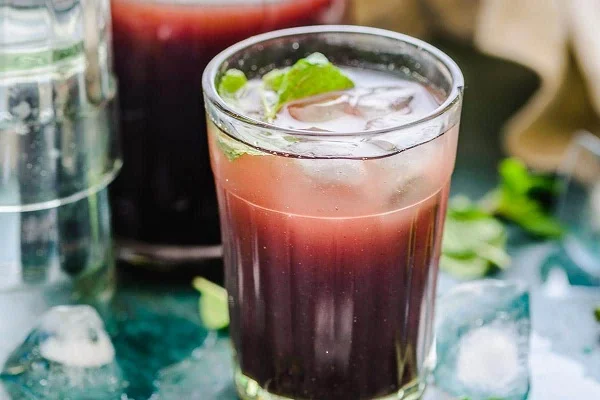
Wine and Kokum
Summer in India is famous for Kokum Sherbet. This drink is a flaming red fusion of sweet, spicy, and sour flavors made with lychee, kokum, roasted cumin, lime, and sparkling wine. The wine is added to bring the flavours together. Mix the ingredients well and serve it in a tall wine glass.
White Rum Kokum
Try pairing kokum sharbat with white rum and you will see the magic happening. In a cocktail shaker add the kokum sharbat, white rum, ice cubes and crushed mint leaves. Shake the ingredients well. Garnish it with some fresh mint leaves.
Gin and Kokum
In a cocktail shaker add some Gin, lime juice, kokum sharbat, rose syrup and salt. Shake the ingredients well. Add some ice cubes and mix the cocktail well. Pour it into a cocktail glass and garnish it with some dried rose petals.
Frozen Kokum Margarita
Frozen margaritas are everyone’s favourite. In a blender add some ice cubes, vodka, tequilla and kokum sharbat. Blend it until you it gets slushy. Make sure not to ver blend it as it may melt the ice. Pour the slushy margarita into a glass and freeze it for 10 minutes. Your frozen kokum margarita is ready to blow away your summer glooms.
Kokum Juice or Kokam Sharbat
Basically, a healthy and refreshing cool drink or beverage prepared mainly from the kokum fruit or Garcinia Indica. it is a simple drink to prepare and involves preparing the concentrated kokum syrup for future use. later the syrup is diluted with water as per the preference and served with cold ice.
The summer season can be daunting with the heat and humidity making it very uncomfortable for everyone. evidently, we resort to refreshing and chill juice recipes which can be either store-bought or natural and organic homemade recipes. kokum juice or kokum Sherbet is one such healthy recipe prepared with dry kokum fruit / fresh kokum fruit.
There are a couple of juice recipes, that is nostalgic to me and kokum juice recipe and kokum fruit is one among them. I personally, big fan of kokum fruit and especially the sour leaves from the kokum tree. back then, my first preference was eating the fruit as it rather than converting it to juice and the consume it. moreover, even the leaves are edible and I used to love the combination of sour leaves with sweet ripe fruit. but things changed gradually and I hardly find any trees left now and we can only fetch these awesome fruits via stores. and most of the time it would be sun-dried which can only be used for juice and Rasam.
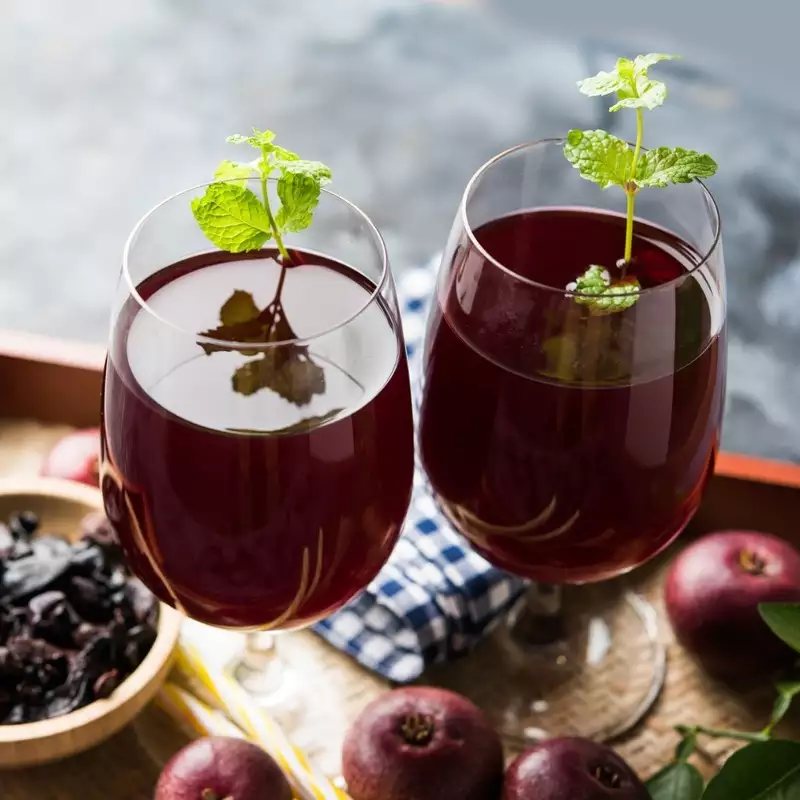
Kokum Juice Recipe
furthermore, some important tips, recommendations and serving ideas for a perfect kokum juice recipe. firstly, the recipe can be prepared from fresh fruits or store bought dry kokum fruits. I have used the dry version, but if you have access to fresh ones then remove the seeds and blend it to a thick pulp followed by the same procedure as dry version. secondly, i have used 2 cups of sugar and it should be ideal for this recipe. but depending on your preference and sour level, you can plus or minus the quantity. lastly, I recommend using 2 table spoon of concentrated kokum syrup to 2 cups of water while preparing the kokum fruit juice. also, add some ice while serving for the chill effect.
Finally, I would like to highlight my other beverage recipes collection with this post of kokum juice recipe. it includes recipes like, thandai, mango milkshake, bottle gourd juice, masala soda, badam milk, mango lassi, lemon juice, sol kadhi, buttermilk, chocolate milkshake, cold coffee and Oreo milkshake. further, i request you to check my other recipes collection like,
Go to Tulu News Page to read more about Tulu Nadu News, Events etc.
Go to Our Partner Website to book Self Drive Cars to drive in Mangalore, Udupi and Kasargod


